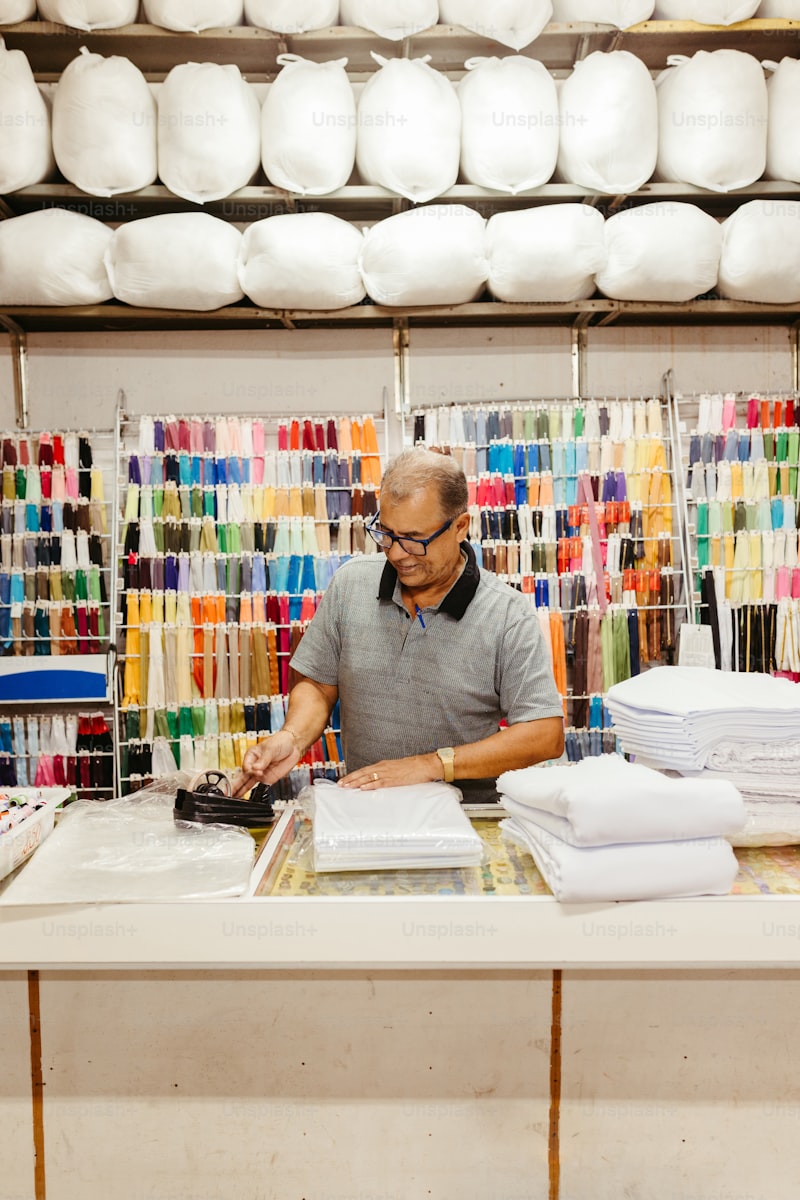Choosing the Right Fabric for Adjustments: A Comprehensive Guide
Introduction
When it comes to making adjustments to garments, the choice of fabric is crucial. Whether you're sewing your own clothes or making alterations to existing pieces, selecting the right fabric can significantly impact the end result. In this article, we will explore various types of fabrics, their characteristics, and how to choose the best one for your specific adjustments.
Understanding Fabric Types
To make informed decisions when choosing fabrics for adjustments, it's essential to understand the different types of fabrics available. Fabrics can be broadly categorized into natural and synthetic options, each with its own unique properties. Below, we have summarized some common fabric types:
| Fabric Type | Characteristics | Best Uses |
| Cotton | Soft, breathable, and durable | Everyday clothing, shirts, dresses |
| Silk | Luxurious, smooth, and drapes well | Evening wear, high-end garments |
| Polyester | Wrinkle-resistant, affordable, and durable | Activewear, casual clothing |
| Wool | Warm, breathable, and has some elasticity | Coats, sweaters, formal wear |
| Linen | Lightweight, breathable, but wrinkles easily | Summer wear, casual dresses |
Factors to Consider When Choosing Fabric for Adjustments
When deciding on the fabric for adjustments, several factors should guide your choice:
1. Purpose of the Garment
Consider the intended use of the garment. If it's meant for everyday wear, fabrics like cotton or polyester may be ideal due to their durability and ease of care. For special occasions, opting for luxurious fabrics like silk can elevate the garment's appeal.
2. Comfort and Fit
Comfort is key when it comes to clothing. Fabrics that are too stiff or rough can hinder movement and cause discomfort. Ensure that the fabric you choose allows for some stretch and feels good against the skin. For form-fitting adjustments, fabrics with a bit of elasticity, such as spandex-blend materials, can provide a better fit.
3. Care Requirements
Different fabrics come with varying care requirements. Some fabrics may need dry cleaning, while others can be machine washed. Be sure to choose a fabric that suits your lifestyle and willingness to maintain it properly.
4. Color and Pattern
Colors and patterns can significantly influence the garment’s look. Consider what colors complement your style and how patterns will fit within your existing wardrobe. Additionally, keep in mind that some fabrics may react differently to dyeing or printing, potentially affecting the final appearance.
5. Budget
Your budget will greatly influence your fabric choices. Natural fabrics like silk and wool tend to be more expensive, while synthetic options like polyester are often more affordable. Always consider your budget alongside the quality you desire for the adjustments.
How to Source the Right Fabric
Finding the right fabric for your adjustments can be an exciting but daunting task. Here are some practical tips to help you source high-quality fabric:
1. Local Fabric Stores
Visit fabric stores in your area to feel the material and observe its qualities firsthand. Speaking with knowledgeable staff can also provide insights that you may not find online.
2. Online Retailers
Online fabric retailers offer a vast selection, often at competitive prices. Websites such as Fabric.com or Mood Fabrics provide filters for searching by fabric type, weight, and more. Nevertheless, always check return policies as colors and textures can vary in person.
3. Fabric Swatches
Many online retailers provide swatches so you can see the fabric's true color and feel its texture before making a purchase. This is particularly useful for ensuring that the fabric meets your expectations for adjustments.
4. Specialty Stores
For specific projects requiring unique fabrics (like costume or performance apparel), seek out specialty shops that cater to those needs.

Common Mistakes to Avoid When Choosing Fabric
It’s easy to make decisions in the fabric department that can lead to unsatisfactory results. Here are a few common pitfalls to avoid:
1. Ignoring Fabric Weight
The weight of the fabric can dramatically affect the finished product. A lightweight fabric may not work well for structured garments, while heavy fabrics might be too cumbersome for delicate designs. Always consider the weight in relation to your intended design.
2. Overlooking Fabric Properties
Each fabric has unique properties that influence how it drapes, stretches, and behaves when sewn. Failing to consider characteristics like stretch or how easily it frays can lead to challenges during the adjustment process.
3. Forgetting About Pre-Washing
Natural fabrics often shrink or change characteristics after the first wash. Always pre-wash your fabric before adjustments to prevent surprises post-alteration.
Conclusion: Making the Right Choice for Your Adjustments
Choosing the right fabric for adjustments can make or break your clothing project. By understanding different fabric types and their characteristics, considering personal preferences, and taking care to avoid common mistakes, you can create stunning garments that meet your vision. Pay attention to the purpose of the garment, comfort, care requirements, color, and budget to ensure satisfactory results and a garment that stands the test of time.
In summary, do thorough research, explore various sourcing options, and don’t hesitate to ask for help or samples from fabric suppliers. With the right knowledge and resources, you will confidently choose the perfect fabric for all your alteration needs. Happy sewing!